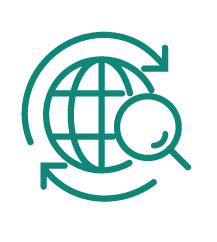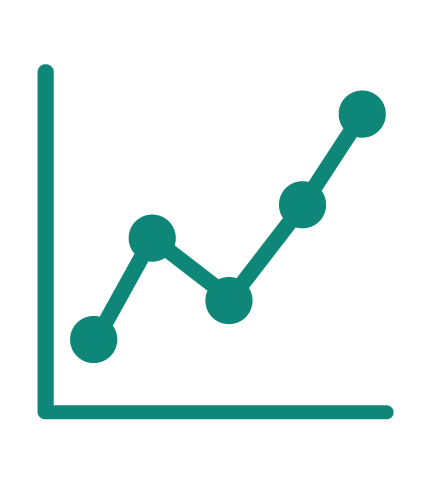Investment Outlook
In our view, the majority of positive developments that propelled markets higher earlier in the current credit cycle are now working in reverse.
Higher interest rates, a stronger US dollar, slowing economic growth and significantly tighter monetary policy define today’s macro landscape. The global economy appears headed for a downturn and we believe the clock is ticking on the US cycle as well. Global central banks are focused on stubborn high inflation, and they appear prepared to drive core levels back to lower targets.
Investment Themes: Key Takeaways
Our take on macro drivers and major asset classes at a glance.
Both the situation on the ground and the associated stress in energy markets remain fluid, but likely to escalate, with no signs of imminent resolution.
We believe labor market resilience is bound to fade. However, the Federal Reserve (Fed) appears poised to keep tightening monetary policy despite its subdued economic outlook.
We believe excessive inflation limits the monetary and fiscal response to the next downturn. In our view, investors should not expect a wide-sweeping rescue.
A pause in the substantial US dollar rally would not surprise us near term. Longer term, economic prospects appear brightest in the US, which could help drive the dollar higher in the cycle.
Active management could add value in a market where investors must be more selective.
Our allocation expresses a cautious view where investors should be in higher-quality securities and relatively higher in the capital structure.
Russian War in Ukraine
Both the situation on the ground and the associated stress in energy markets remain fluid, but likely to escalate, with no signs of imminent resolution.
- Ukraine’s counteroffensives around Kherson and then Kharkiv, coupled with Russia’s decision to effectively cease gas exports to Europe, kicked the conflict into a more dynamic phase.
- Despite initial Ukrainian successes, notably around Kharkiv, Russia retains significant gains. This was underscored by Russia’s decision to annex Luhansk, Donetsk, Zaporizhia and Kherson oblasts (provinces) —a decision consistent with our initial assessment of Russian war aims.
- Russia’s annexation, coupled with Putin’s bellicose rhetoric, is a marked escalation: the Kremlin’s official position is now that there is a hot land war raging on what it claims to be Russian soil with Ukrainian forces under de facto NATO command.
- We believe the risks of military escalation remain very high, with the use of weapons of mass destruction a distinct possibility. The knock-on effects of Russia’s cessation of gas flows to Europe are both ominous and difficult to precisely quantify. Both vectors present a downside risk to growth and markets within Europe and globally.
Macro Drivers
The Fed’s economic projections suggest US unemployment will rise 0.70% by the end of 2023.
- Fed tightening is usually consistent with the early stages of a credit cycle’s expansion phase. However, despite two quarters of real GDP contraction in 2022, the Fed has ramped up its tightening efforts.
- Financial conditions could tighten further as the Fed seeks to maintain a positive real policy rate. In our view, the fed funds rate will likely climb 100 basis points higher to 4.25% by the end of 2022, with at least one more hike in early 2023.
- Even with US recession risk rising quickly, we believe the Fed will continue hiking. Its short-term objective is to bring inflation down to target by crushing demand and thereby preventing entrenched inflation from threatening long-term economic stability.
- This new regime of higher interest rates, a stronger dollar and tighter Fed policy stand to keep market volatility elevated in the US and abroad.
Credit
Corporate pricing power has been in decline, but the silver lining is potentially lower inflation.
- Our quantitative credit health indicator suggests underlying fundamentals are currently favorable, with potential for positive excess returns over the next six months.
- From a top-down macro perspective, we recognize that profit margins are just off record highs. However, the trend for margins is likely to remain lower through the end of this cycle.
- We expect a slow and steady deterioration in credit fundamentals. However, credit rating downgrades
and defaults should remain at fairly low levels relative to other late-cycle phases. - While the credit outlook is a cautious one, we believe there is a strong case for owning credit during the volatility that we anticipate.
- In 2022, yields on US investment grade and high yield corporate credit indices rose substantially. At this point in the year, yields appear to be more than compensating investors for expected losses due to downgrades and defaults.
- Yields on floating-rate bank loans have reached relatively attractive levels. However, we caution that investors should remain in higher-quality securities as the cycle progresses. Additional Fed rate hikes could inflict the most pain on lower-quality credits.
Government Debt & Policy
Developed market central banks are taking steps to reverse policies of extraordinary accommodation. We do not expect a lasting pivot away from these actions anytime soon.
- Developed market interest rates made shocking upside moves over the course of 2022 in response to stubborn inflation pressures. We see renewed value in the rates markets after the reset, and believe much of the rise in long-term yields is in the rearview mirror.
- The leap higher in global yields has staying power and we see these new levels continuing to exert downward pressure on other assets’ valuations.
- The short end of government yield curves remains subject to inflation trends. We see signs that inflation is peaking, particularly in commodity prices and transportation costs. However, short-end yields could remain stable, or even face upward pressure, if inflation continues to surprise.
- Investors willing to hold short-term government bonds until maturity could potentially earn meaningful nominal returns in this highly volatile environment.
- US Treasurys have not been an effective hedge to market volatility in 2022. However, we believe this characteristic could return as the cycle shifts closer to downturn.
- Over the past two cycles, monetary and fiscal policies were able to quickly arrest market and economic downturns. That type of extreme intervention is not guaranteed in the next downturn due to inflation being above central bankers’ long-run targets.
Currencies
With risk appetites likely to remain constrained, the US dollar will likely be the recipient of "safe haven" flows.
- In past cycles, the Fed would pivot toward cutting rates shortly after the terminal rate was reached. We do not anticipate that type of quick reaction this cycle and believe short-term rates could attract foreign capital into US dollars.
- Global economies may have a tougher time fighting the inflation battle. Consequently, global growth, excluding the US, could struggle as monetary policy stays restrictive for longer.
- Until global growth begins to improve, perhaps led by China, we may not see foreign currencies consistently outperform the US dollar.
- When higher-credit quality government debt had interest rates near zero, investors sought higher returns in emerging markets and other higher-yielding assets. That scenario has reversed and will likely continue over coming quarters, in our view.
- Our fair value framework suggests the dollar is very expensive. However, trends in currency valuation metrics tend to ebb and flow over long periods rather than indicate turning points.
- We are selectively seeking exposure to currencies within emerging markets. Currencies in South Africa, Brazil, Colombia and Mexico appear compelling relative to the US dollar.
Equities
The resilient earnings backdrop will likely come under pressure as financial conditions tighten and nominal GDP slows.
- In our view, the Fed’s willingness to put the US economy in recession to lower inflation is a major risk for equity performance and earnings potential.
- Consensus earnings growth for 2023 remains around 7%. We expect large cap earnings will be flat year over year in 2023 if a recession is avoided.
- So far in 2022, equity earnings have held up well, largely because pricing power had remained strong across most industries. If pricing power fades, we expect the remainder of this year and 2023 could be challenging.
- With decreasing pricing power, profit margins could drift lower, but likely not collapse. If demand significantly disappoints, then earnings and margins could see a much steeper drop.
- Rising interest rates are challenging equity valuations. At the same time, our earnings expectations are very muted. Equity prices will likely remain challenged by higher rates and earnings that are likely to be revised lower. We expect the equity market to remain volatile until macro conditions firm.
- As we enter the fourth quarter, equity markets appear technically oversold globally and we feel that much of the negative macro catalysts are understood by the markets. With sentiment so poor, positive developments could spark a near-term rally.
Potential Risks
Most markets appear priced for a global economic slowdown but not an outright downturn.
- The global monetary tightening cycle is progressing rapidly alongside supply-side challenges and inflation levels not seen in decades. It may take longer than markets anticipate, and even higher short-term rates, to push inflation down to acceptable levels.
- A global recession may be a necessary condition to achieve central bank inflation goals. If that scenario develops, we believe credit spreads could widen significantly and equities could come under renewed pressure.
- Long-term interest rates could head lower as a downturn scenario takes shape and investors likely seek safe havens.
- An upside scenario is one where economies, particularly the US, remain resilient and labor market strength prevents a downturn from taking hold. Achieving price stability, while limiting job losses and a prolonged downturn, would be a major win for the Fed.
- Earnings could prove more resilient than we expect, which would support corporate health fundamentals. Downgrades and defaults have been historically low through this cycle. A continuation of that trend would be highly supportive for credit markets.
Author

Craig Burelle
VP, Senior Macro
Strategies Analyst










